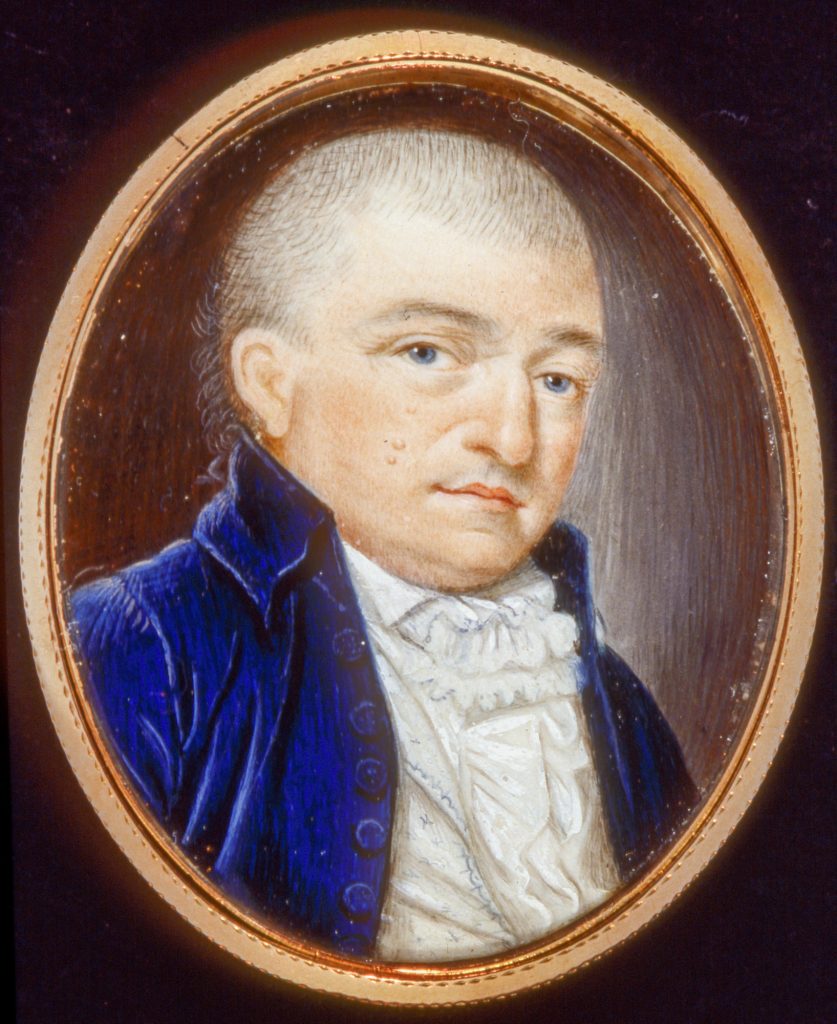Born in Strasbourg, Alsace, Abraham Moise left home in his youth, and had already seen most of Europe when his boat docked in Cape Francois in the French settlement of San-Domingue. This was a period of rapid economic expansion for the island of Hispaniola—divided into French and Spanish colonies—and Moise successfully set himself up in trade, profiting handsomely from the frenzied interchange of sugar and slaves.
In 1779 he was married to a woman twenty-nine years his junior, Sarah Lopez, born to a family of Sephardi merchants on the small Caribbean Dutch colony of Sint Eustatius. Initially the couple lived on the island, a free port that served as an important source of trade for the embattled colonies during the Revolutionary War, and most likely Moise was involved in just such an enterprise. In 1781 the British captured Sint Eustatius, and Moise moved back with his family to Hispaniola.
Running a plantation and bringing up four sons—Cheri, Hyam, Cadet and Bien aimé—the Moise family was again uprooted by history, in 1791. Revolution broke out in Saint-Domingue, and the colony saw the largest and most successful African slave rebellion in the Western Hemisphere, eventually resulting in the establishment of Haiti as a free black republic. Family legend has it that Moise was roused in the middle of the night and warned of coming danger by one of his slaves, leaving the family just time enough to pack up a few possessions and escape the fate of so many other plantation owners on a boat bound for Charleston. What’s more, the story’s slave was to become one of the leaders of the Haitian Revolution, the beloved General Moise. Victor of several key battles, General Moise would become the adopted nephew of revolutionary leader (and later self-appointed governor-for-life) Toussaint L’Ouverture, who eventually turned on the general, having him executed on charges of mutiny.
Though he tried to make it as a merchant in Charleston, Abraham found it difficult to recover financially. In 1795 the following notice appeared in the Daily Adevrtiser:
Mr. and Mrs. Moise
Unfortunate sufferers from the Cape present their compliments to the ladies of this city and take the liberty to inform them that they have for sale, at their house on Queen-street, three doors from King-street, and opposite to Mr. Nixon’s school, a few pieces of india, japan, and plain muslins; hum-hum threads, tapes, white chapple needles, and fine linens, &c. &c.
Also just opened one chest of
HYSON TEA:
Equal to any in this city, which they will sell
7 shillings per pound.
As Mr. and Mrs. Moise mean to sell at a very small profit, they hope for the encouragement of the generous public, wh. Will enable them to support a large family.
And indeed the large family continued to grow. In addition to the four boys, three of whom now bore newly anglicized names—Cheri had been redubbed Cherry, Bien amie Benjamin, and Cadet Aaron—Rachel, Penina, Jacob, Abraham Jr. and Isaac now augmented the Moise family in Charleston, with three more to follow.
While Abraham was never able to recreate the financial success he had known in the Carribbean, he involved hiself with Charleston’s Jewish community and with Jewish charities—a member of Kahal Kadosh Beth Elohim and founder of the Hebrew Orphan Society. Among his children, two would mark out particularly prominent places within the annals of American Jewish history: Penina was to become a famed poet, hymnalist and educator. Abraham, Jr. helped found Charleston’s Reformed Society of Israelistes, the first American manifestation of Reform Judaism, and wrote a biogrpahy of cofounder Isaac Harby. Among his grandchildren were Charleston painter Theodore Sydney Moise, whose portraits of Abraham’s grandson Edwin and great-granddaughter Caroline are featured in this collection.
